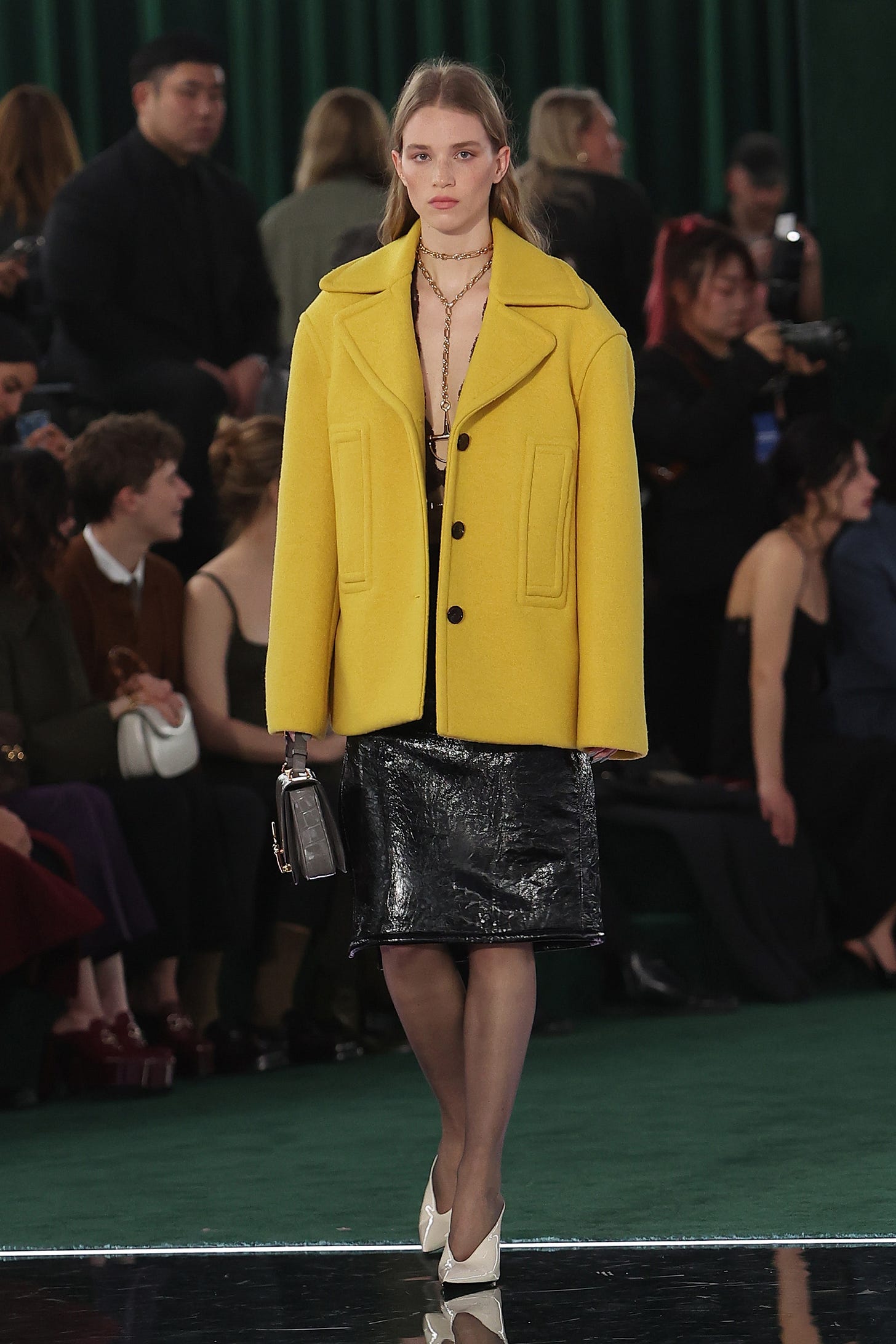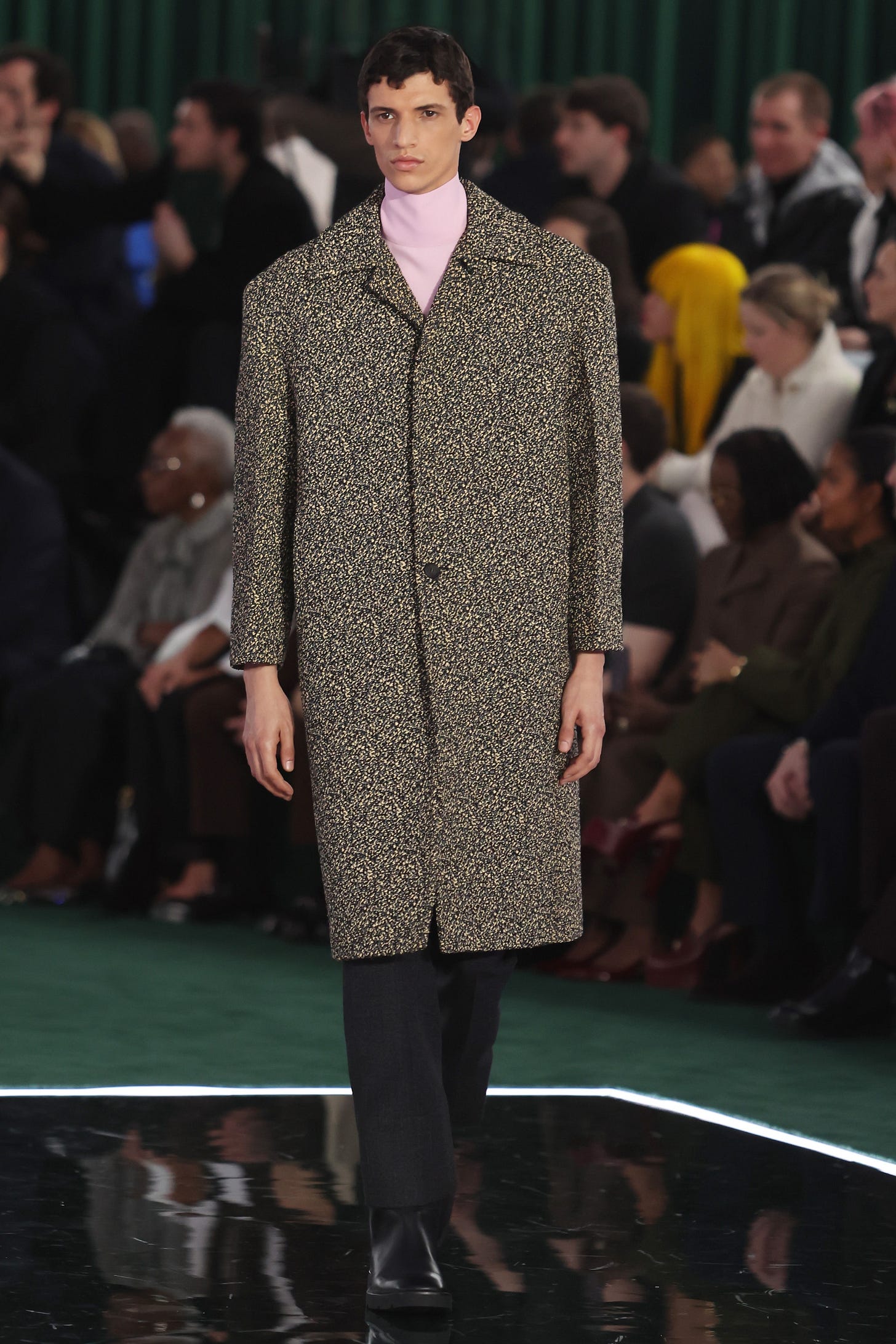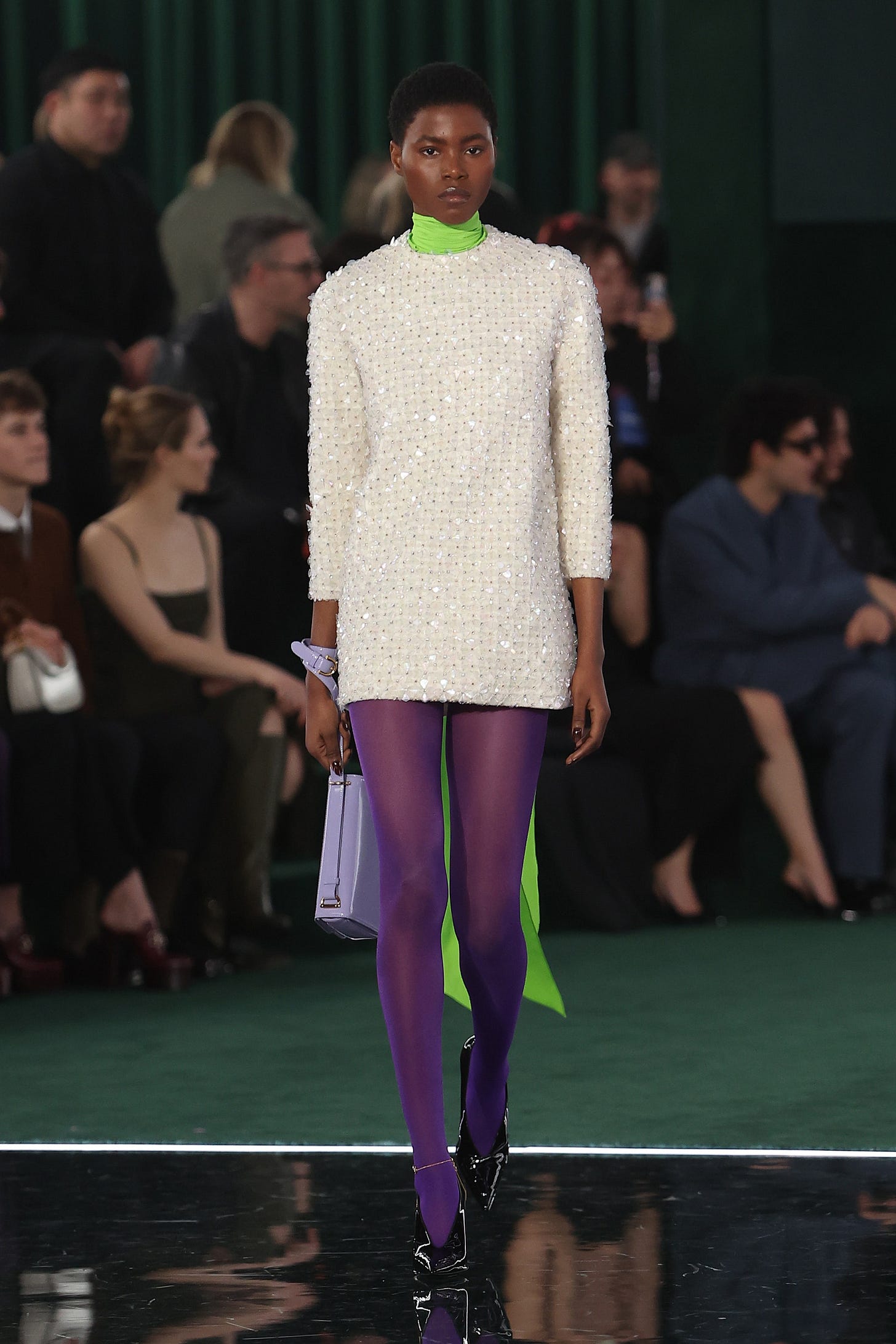GUCCI'S TIPPING POINT IS A SIGN OF THINGS TO COME
Luxury's giants are more vulnerable than they appear.

By the time Dawn Mello was hired as Gucci’s creative director in 1989, she already had a track record for reviving sleeping beauties. Most famously, Mello breathed new life into Bergdorf Goodman, making the once-grand emporium of American luxury retail shine anew. Mello was a merchant at heart with an instinct for what shoppers would find exciting. Gucci was in dire need of her help.
Though the Florentine brand had seen its iconic loafers become a symbol of the decade, the company was in increasing financial distress as it struggled to cast off its dusty image. But there was now an action plan with a very specific goal: to turn Gucci into the Italian Hermès. The idea was more than logical. Like Hermès, Gucci had a strong history of artisanal skill specializing in leather, a back catalog of impeccable bags, an array of signature prints used on silk accessories, and an identity long separated from the individual founder whose name the company bore. The parallels were almost too obvious. If one brand were to embody what Italian style and craft were all about in the same manner Hermès did for France, Gucci seemed more than a fitting choice.
Mello quickly got to work slashing the number of stores, eliminating tacky licenses and focusing the product lineup. She also hired an unknown designer named Tom Ford. The reshaping of Gucci kept within Mello’s rarefied taste until she left to return to Bergdorf Goodman in 1994. It goes without saying that Gucci, ultimately, did not become an Italian equivalent to the revered French saddle maker, instead choosing to embrace Fashion and the kind of disposability that now entails – which leads us to the baffling show presented earlier this week.

Possibly the most offensive part of this collection is its blatant attempt to look like Raf Simons’ version of Prada. Why anyone would attempt this when even Raf rarely makes it look passable is beyond me. I could take a closer look at the designs, weighing their virtues and shortcomings, but I don’t find this show worthy of that. What I really want to discuss is what it represents in the macro sense.
Gucci’s sales were down 24 percent in the fourth quarter of 2024, the latest in a downward slide that has persisted for more than a year. This was the final straw Kering needed to oust designer Sabato de Sarno whose collections failed to inspire. But this new collection, presumably done for the most part under his watch, is great in one respect: it accurately showcases what fashion has become. The big-budget runway and front row full of stars can no longer mask a parade of looks devoid of voice, ideas or perspective. Truthfully, it hasn’t in years, but shoppers worldwide are catching on, unwilling to part with their money for such uninspired wares during these troubled economic times, even if they have the cash in hand.
Gucci Fall 2025 is nothing more than a preview of product made to mediocre standards that will eventually get cranked out on assembly lines by the thousands as the brand insists on handmade artisanal values. And all of it will be criminally overpriced. What’s worse is that one could replace ‘Gucci’ in that statement with nearly every other major label in the game, and it would still hold true. This is the current standard in fashion.

I can’t help but sense the bubble is finally bursting. I don’t mean to suggest that these behemoths will magically become worthless overnight (they won’t), but they have become so inflated in value, so deeply unsustainable as businesses, and so disconnected from what made them genuinely luxurious in the first place that a dramatic and permanent shift feels inevitable.
‘Analysts’ – whose greatest talent is to declare it’s raining after they’ve already gotten wet – believe the pendulum will swing back at some point late this year or early next. I have no doubt that economic indicators will stabilize eventually, but they won’t move the needle on the fundamental problem.
The industry as it exists today is a contemporary invention. In the face of the LVMHs and Kerings of the world, it’s easy to forget they’ve only existed for about 30 years or so. Most of fashion history consists of small firms run by individual entrepreneurs or tight-knit families who understood that producing at tremendous volume was diametrically opposed to luxury. It seems luxury’s modern overlords haven’t sufficiently learned that lesson yet. Just as every emerging tech company no longer automatically receives a valuation in the billions, the era of investors hoping to turn every brand into the next Chanel is over.




This is an excoriation of Gucci’s latest misstep, yes, but more importantly, it’s a eulogy for an era of fashion that has long since lost its soul. The comparison to Hermès at Gucci’s 1989 crossroads is particularly striking, not just because of the obvious shared DNA in craftsmanship, but because it underscores the industry’s most fundamental divide: heritage versus hype. Hermès chose the slow burn of artisanal integrity; Gucci, despite a brief and promising flirtation with refinement under Dawn Mello, ultimately threw itself at the altar of high fashion’s dopamine rush.
And here we are, as you write it. What we see now isn’t just another bad collection — it’s the culmination of decades of unchecked expansion, corporate bloat, and an industry that mistook mass production for modernity. That Gucci Fall 2025 appears to be a Raf Simons knockoff is less an insult to Raf than an indictment of fashion itself: a hollow spectacle. When every brand cannibalises the same tired aesthetics, when the runways become indistinguishable from one another, when luxury houses churn out products with the efficiency of fast fashion while insisting on their “handmade values” — what, exactly, are people still paying for?
The most damning truth is that fashion has outpriced its own mystique. As much as Kering and LVMH have tried to convince us that luxury is about exclusivity, scarcity, and artisanship, their business models betray them. They aren’t selling craft; they’re selling scale. And in an era where even the wealthiest consumers are scrutinising their spending, where brand fatigue is setting in, and where the illusion of desirability is breaking down, the cracks in the façade are impossible to ignore.
So yes, the bubble is bursting, not with a bang, but with the slow, unceremonious deflation of an overinflated industry that forgot what made it special in the first place. The question now isn’t whether the pendulum will swing back, but whether there’s anything left to salvage when it does.
And I’m very pessimistic….
Excellent article, Martin! Everything you said was right on the money. I think the trends of all the famous designers between 1994 and 2015 were some of their best! I can't believe today's Gucci line and Calvin Klein.